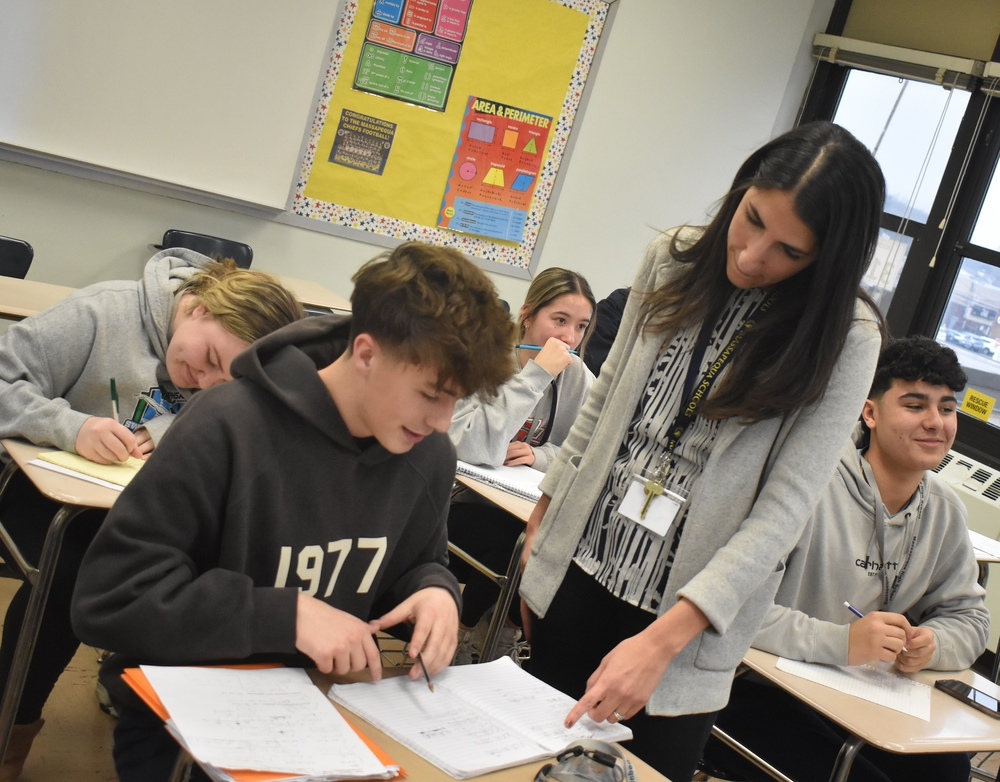From meetings with teachers to classroom demonstrations, Carol Dacey keeps a busy schedule as the secondary math instructional coach for the Massapequa School District. She works with more than 50 general and special education teachers at Berner Middle School and the high school’s main and Ames campuses.
Mrs. Dacey rotates among the three schools, spending two consecutive days at each building which allows her to support alternating-day classes. She has individual meetings with teachers, grade-level meetings at Berner during common prep periods, and pushes into classrooms to work with students and model instructional strategies.
In middle school and high school classrooms, Mrs. Dacey will also co-teach lessons as a way of introducing new technology. The district has several digital platforms that support secondary math instruction, including Desmos, GeoGebra and Graspable Math. Multidisciplinary tools like Gimkit, Kahoot! and PearDeck are also used to by teachers to review concepts with students.
“A lot of those programs, the non-math specific ones, teachers learn them from the technology instructional coaches on a generic level, then work with Carol to make them math-specific,” said John Watson, supervisor of mathematics 6-12.
Just like at the elementary level, secondary math teachers also provide small-group instruction to target specific skills that address individual student needs. Mrs. Dacey reviews student data with math teachers to help them plan these small-group sessions. At Berner, much of the data is gathered from the fall, winter and spring iReady diagnostic exams, as well as in-class assessments and teacher observations.
When a new topic is about to be introduced, Mrs. Dacey will work with teachers to make sure their students have the prerequisite knowledge to advance. Sometimes, additional intervention is needed and the math instructional coach is a valuable resource to help accomplish that.
Mr. Watson explained that a benefit to being at all three secondary schools is that Mrs. Dacey works with teachers to support vertical alignment of the curriculum. Some courses are taught at multiple buildings. Algebra is offered at all three schools, and geometry courses are at the main and Ames campuses.
Mrs. Dacey attends professional development workshops, gaining knowledge that she brings back to share with the secondary math teachers. It helps her stay current on curriculum changes in the Next Generation Learning Standards and the evolution of digital resources. She attends training sessions through the Association of Math Supervisors of Long Island, BOCES, Texas Instruments and coaching collaboratives offered by various districts.
This is Mrs. Dacey’s 10th year in the district and fourth as an instructional coach. She has taught math at all three secondary buildings and remembers the value of the math coach when she was a new teacher.
“One of the most valuable parts as the math instructional coach is the relationships with teachers,” she said. “I am here to encourage and support my colleagues; I find it very rewarding to work with new teachers who are just starting out as well."
Mrs. Dacey also mentioned the importance of building relationships with the students that she sees throughout the years – all of which make the job purposeful and meaningful.



